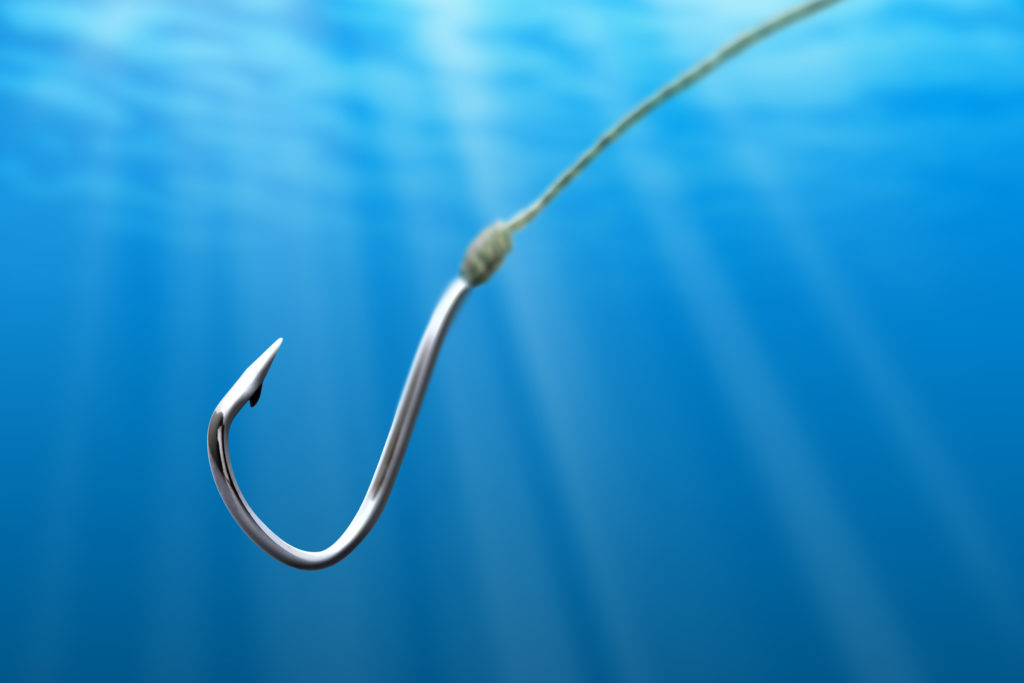Plastics Serve Purpose in Fishing

By Dennis Doyle
I flipped my small, ¼-ounce, silver Rat-L-Trap plug out about 100 feet or so close to the wooden remnants of a boat pier that had long ago fallen to ruin. Putting my small spin reel spooled with 6-pound mono into gear, I made just two or three turns of the handle when the fish struck. The graphite in my light, 6-foot rod began groaning in agony as the creature made off for the horizon at flank speed, hardly slowed at all by a firmly set drag.
Usually, I hang a channel cat or two along with my targeted white perch in this area of the Bay but lately, it’s become even money that it could as easily be a blue cat. Blues can often reach 50 pounds and though I am not deluded enough to imagine wearing a monster down of anything over 20 pounds with my perch rig, I always relish a good fight.
Slipping my engine into neutral after turning to follow the run, I allowed the fish to provide my skiff’s propulsion and patiently awaited an end to its first burst of speed—it was not long in coming. Still, I did not have a clue as to the size of my quarry as it broached the water in confusion some 100 feet away.
The rascal turned out to be a hefty 26-inch channel cat, handsome in its way and the potential source of some delicious fried catfish fingers. It went into my insulated cooler to await dinner.
Some youthful memories washed over me as I cleared my light, graphite jig rod, remembering my first real fishing pole: a shiny blue, 10-ounce tubular metal beast, about 6.5 feet with a bulky, conventional casting reel filled with thick, black fishing line of about 12-pound test and a weighted spinner with a bucktail dressed treble hook. I spent half my life picking backlash tangles out of that cranky bugger back then and thought myself lucky that it was only half the time.
It took many years to get anywhere close to developing the fine sporting tackle we have today, though most people do not know how difficult angling could be back in the olden days. The invention and development of synthetic plastics changed the whole world and in particular the sporting world like no other material.
Plastic was invented in 1862 by Alex Parks who was trying to develop a synthetic substitute for shellac, a clear, brush-on waterproof finish excreted by the Indian lac bug. Instead, during his many attempts, he discovered cellulose, the first, moldable plastic. From that initial success, he and many others went on to create numberless types of synthetic plastic substances.
By 1935, with constant effort at developing these new materials, nylon was invented by Dupont from a complex heating of a mixture of carbon from petroleum and acids. The resultant filament became useful as a thread for women’s clothing, particularly stockings, but it wasn’t until 1960 that nylon monofilament was perfected to the point that anglers began to prefer it to all other forms of fishing line.
That fishing line was stronger and much less visible than other options. Then glass, carbon and graphite fibers were added to plastics, which among many other applications allowed fishing rods to become lighter and responsive. It also found particular advantages in boat building and since it was strong and quite indestructible, soon found uses in cars, planes, homes, rain clothes, footwear, hats and almost anything else one could envisage.
Of course with any material becoming so ubiquitous, it’s been discovered that plastics also possess a downside. One of its major qualities became a major fault—it does not easily degrade nor dissolve. Over time, we have created a massive disposal problem, with plastic showing up everywhere throughout the globe. The chemicals and by-products used to create the plastics are also being increasingly discovered in our foods, soil, groundwater and even in our bloodstreams.
While the seriousness of those issues is still under much study it is wise to begin taking steps to minimize plastic’s intrusion into our physical selves. One particular use—bottled water—is a growing threat because we all use it, everywhere and almost all the time. It’s also become clear that plastic bottled water should not be stored or exposed to temperatures near or above 100 degrees F–like in your car or boat during summer. Some studies have shown that antimony and other chemicals in the bottle can leach into the water if stored in hot temperatures for a long time. You can often taste them. They are not good for you, causing headaches and depression. Keep your water cool and deposit your plastics for recycling. So we can enjoy the incredible advantages of these synthetics but do so responsibly.
